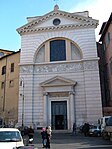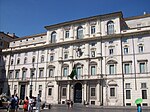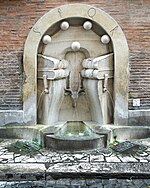Piarists

The Piarists (), also known as the Order of Poor Clerics Regular of the Mother of God of the Pious Schools (Latin: Ordo Clericorum Regularium pauperum Matris Dei Scholarum Piarum, abbreviated SchP) or simply Scolopi or Escolapios, is a religious order of clerics regular of the Catholic Church founded in 1617 by Spanish priest Joseph Calasanz. It is the oldest religious order dedicated to education, and the main occupation of the Piarist fathers is teaching children and youth, the primary goal being to provide free education for poor children. The Piarist practice was to become a model for numerous later Catholic societies devoted to teaching, while some state-supported public school systems in Europe also followed their example. The Piarists have had a considerable success in the education of physically or mentally disabled persons. Some notable individuals taught at Piarist schools include Pope Pius IX, Goya, Schubert, Gregor Mendel, Tadeusz Kościuszko and Victor Hugo.
Excerpt from the Wikipedia article Piarists (License: CC BY-SA 3.0, Authors, Images).Piarists
Vicolo della Cuccagna, Rome Municipio Roma I
Geographical coordinates (GPS) Address Nearby Places Show on map
Geographical coordinates (GPS)
| Latitude | Longitude |
|---|---|
| N 41.897361111111 ° | E 12.473425 ° |
Address
Palazzo Lancelotti
Vicolo della Cuccagna
00186 Rome, Municipio Roma I
Lazio, Italy
Open on Google Maps











